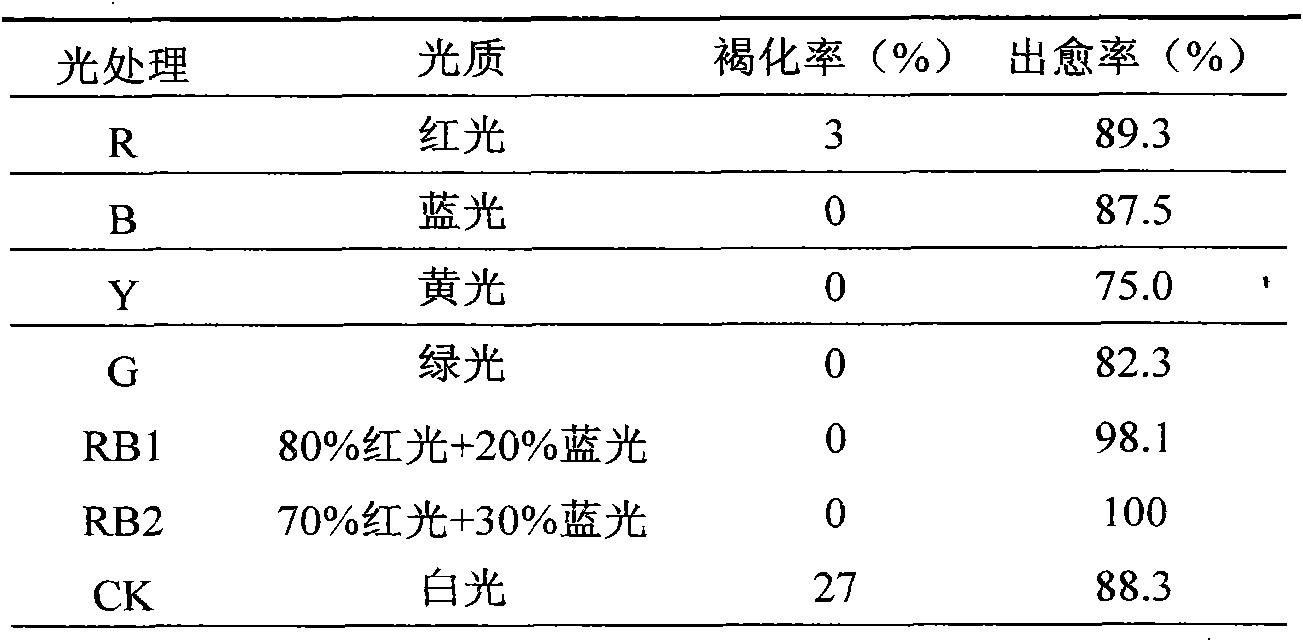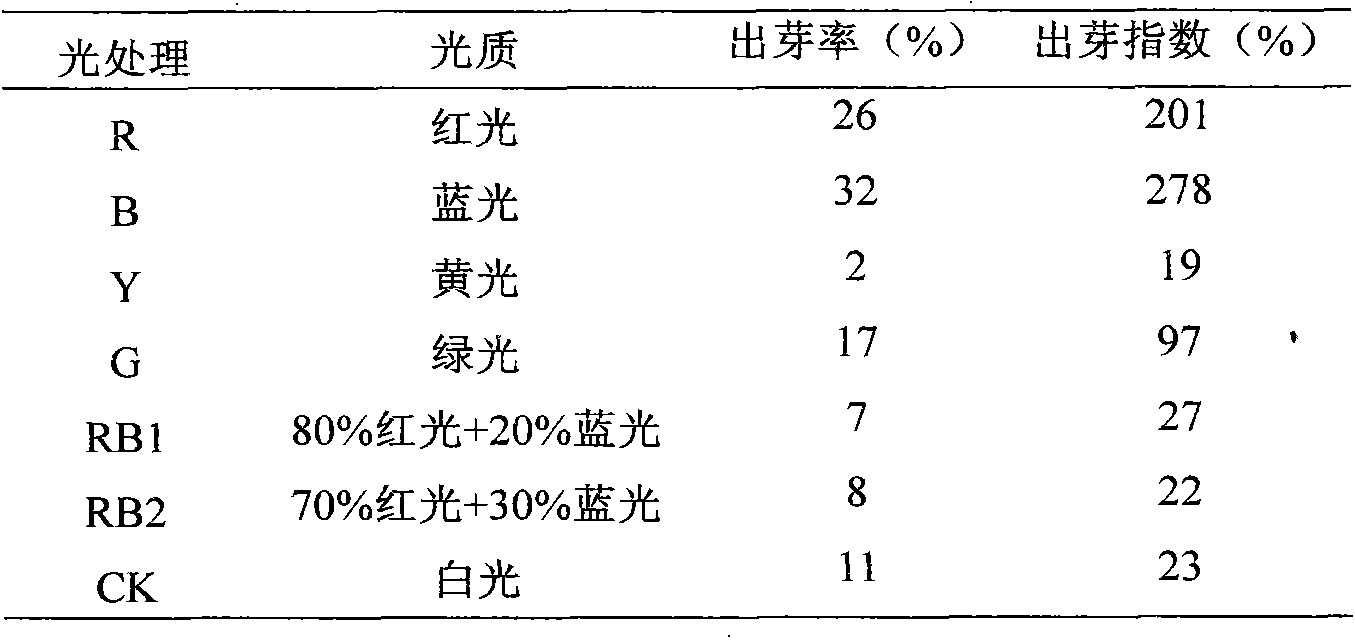Culture method of ellcalyplus grandis Hill ex Maid tissue culture seedling
A method for cultivating tissue culture seedlings, applied in the field of cultivating Eucalyptus grandis tissue culture seedlings, can solve problems such as environmental pollution, short lifespan, mercury content, etc., so as to improve the callus induction rate, increase the average cost less, and shorten the emergence of seedlings. effect of time
- Summary
- Abstract
- Description
- Claims
- Application Information
AI Technical Summary
Benefits of technology
Problems solved by technology
Method used
Image
Examples
Embodiment 1
[0013] Select mature seeds and soak them in warm water at 50-55°C and cool them down naturally. After 4-6 hours, wash them twice with sterile water, sterilize them with 20% (volume ratio) NaClO for 15 minutes, rinse them with sterile water for 3-4 times, and inoculate them in 1 / 2 MS culture. basically.
[0014] Take the leaves of the above-mentioned tissue-cultured seedlings (leaf width 0.5-1 cm) as explants, and cut 3-4 wounds on the leaves, and the depth reaches the main vein. Insert the treated leaves into WPM+6-BA1mg L -1 +NAA0.2mg·L -1 In the culture medium, after 5 days of dark culture, 7 LED light sources with different light qualities were placed to induce callus, and 9 petri dishes with a size of 90*15mm were placed under each light, and 12 leaves were inoculated in each petri dish. Adjust the LED light control software and the distance between the light source and the plants so that the light intensity is 105 μmol m -2 ·s -1 around, the photoperiod is 16h·d -1 ,...
Embodiment 2
[0024] A batch of sterile seedling leaves (0.5-1 cm in leaf width) were reselected as explants, and callus induction culture was carried out under RB2 light, and the rest of the operation and culture conditions were the same as in Example 1.
[0025] After 40 days, the callus cultured under RB2 light was transferred to WPM+6-BA1mg L-1+NAA0.3mg L-1 medium, and placed under 7 LED light sources with different light qualities in Table 1. For adventitious bud differentiation culture, 9 petri dishes with a size of 90*15mm were placed under each light, and 12 pieces of callus explants were inserted into each petri dish. The light, photoperiod and conditions of the culture room are all consistent with those in Example 1.
[0026] After 30 days of transfer culture, the growth of adventitious shoots of calli under 7 light treatments was counted, and the results are shown in Table 3.
[0027] Table 3 Adventitious buds under different light quality
[0028]
[0029] Note: germination...
Embodiment 3
[0033] The effective adventitious buds cultivated under monochromatic blue light and monochromatic red light in Example 2 were excised, and added 1.0 mg·L -1 In the 1 / 2MS medium of ABT, put it under 7 different light quality LED light sources in Table 1 to carry out adventitious bud growth and rooting culture, put 9 bottles (diameter 7cm, high 10cm glass bottle) under each light, each bottle receives 8 active buds. Adjust the LED light control software and the distance between the light source and the plants so that the light intensity is 95 μmol m -2 ·s -1 around, the photoperiod is 14h·d -1 , cultivated for 20 days. The relative humidity of the culture room is 70%±5%, and the temperature is (24±1)°C.
[0034] After 20 days of cultivation, the growth and rooting of the seedlings cultivated under different light qualities were observed, see Table 4 for details. After observation, the seedlings cultivated under green light were transferred to yellow light for rooting cultu...
PUM
| Property | Measurement | Unit |
|---|---|---|
| Wavelength | aaaaa | aaaaa |
| Wavelength | aaaaa | aaaaa |
| Average root length | aaaaa | aaaaa |
Abstract
Description
Claims
Application Information
 Login to View More
Login to View More - R&D
- Intellectual Property
- Life Sciences
- Materials
- Tech Scout
- Unparalleled Data Quality
- Higher Quality Content
- 60% Fewer Hallucinations
Browse by: Latest US Patents, China's latest patents, Technical Efficacy Thesaurus, Application Domain, Technology Topic, Popular Technical Reports.
© 2025 PatSnap. All rights reserved.Legal|Privacy policy|Modern Slavery Act Transparency Statement|Sitemap|About US| Contact US: help@patsnap.com



